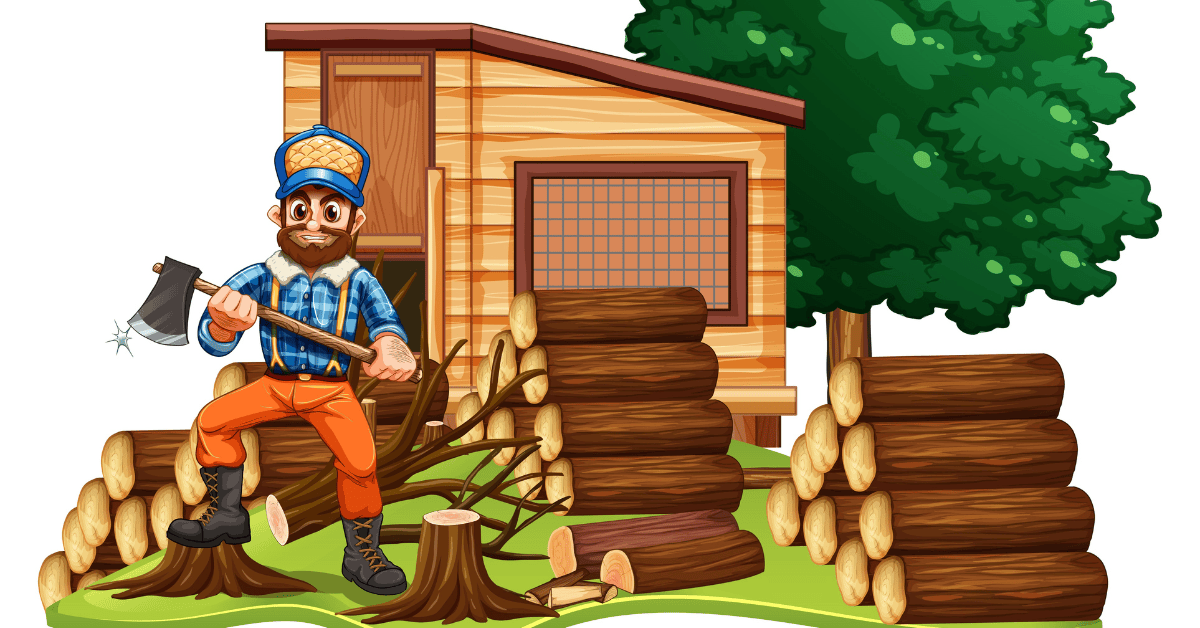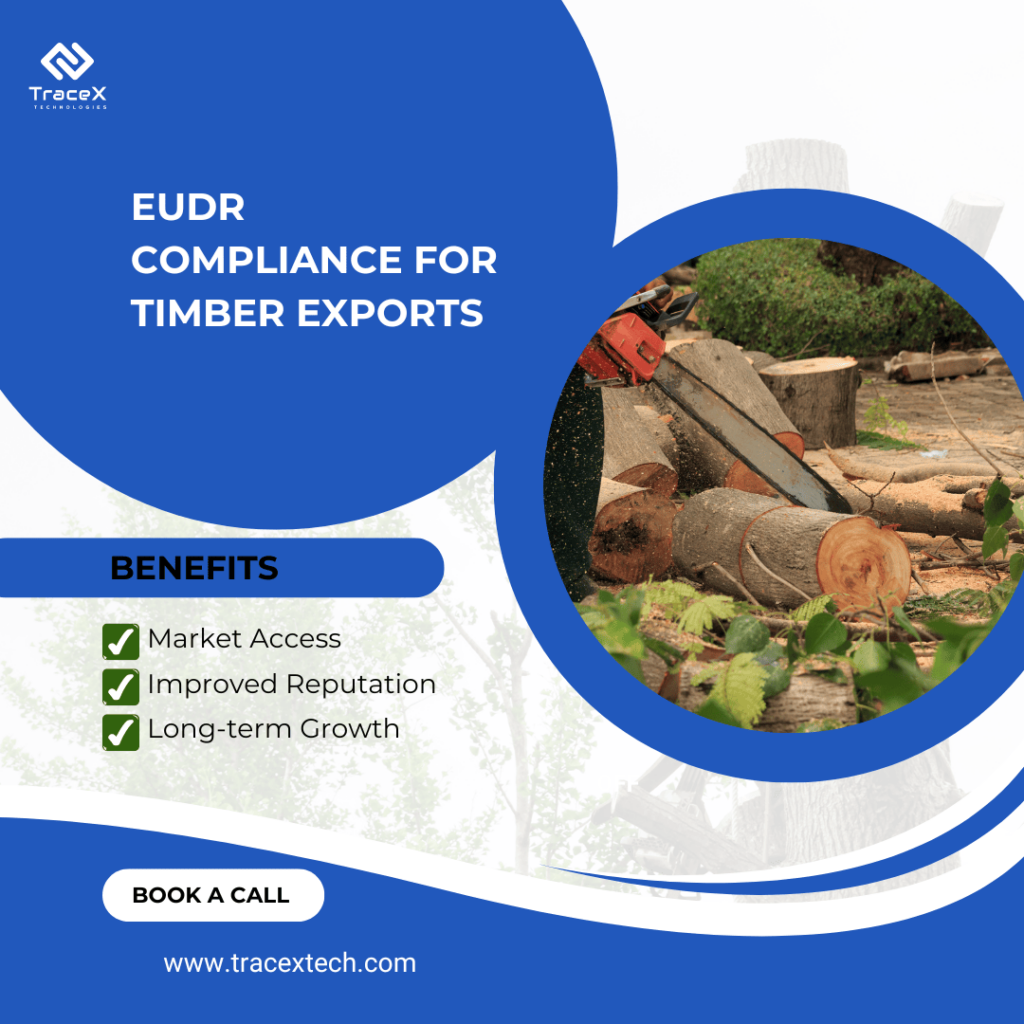Contact: +91 99725 24322 |
Menu
Menu
Quick summary: Learn how African timber exporters can navigate EUDR compliance, including key requirements, challenges, and best practices. Stay competitive in the European market with this essential guide for sustainable timber trade.

Did you know that over 16 million hectares of forest are lost each year, and much of that loss is linked to global trade in commodities like timber? The European Union Deforestation Regulation (EUDR) is changing the game for African timber exporters. While the promise of accessing the lucrative European market is appealing, the path to compliance can feel like navigating a dense forest of regulations. Many African timber exporters are left wondering how to meet these stringent requirements without overwhelming costs or disrupting their existing supply chains.
The global demand for low-cost timber fuels a multibillion-dollar illegal logging industry, contributing to 15%–30% of global timber production. This trade ranks as the third-largest transnational crime. Consumption of tropical timber, especially by the US and other industrial nations, significantly drives tropical deforestation and forest degradation.
If you’re looking to understand how to keep your business compliant without losing your competitive edge, this guide is for you. Let’s break down the EUDR and how you can turn these challenges into opportunities.
Key Takeaways
The European Union Deforestation Regulation (EUDR) is a new rule that aims to ensure products entering the European market are free from deforestation. But what does that mean for the timber trade? Let’s break it down simply.
EUDR is designed to prevent the sale of products that contribute to deforestation or forest degradation. For the timber industry, this means that companies exporting to the EU need to prove that their timber is sourced responsibly and hasn’t contributed to cutting down forests unlawfully.
This regulation requires exporters to collect detailed information about where their timber comes from, including proof of the land’s status. Essentially, the EU wants to ensure that forests aren’t being sacrificed for timber production. It’s all about protecting the environment and encouraging sustainable practices.
If you’re a timber exporter, EUDR compliance means more paperwork and compliance checks. But it also opens opportunities to access the European market by showing that your products meet these new standards. Plus, it’s a step toward more sustainable forestry and a healthier planet.
In simple terms, the EUDR is the EU’s way of saying, “We only want timber that’s been harvested the right way.” It’s a challenge, but with the right approach, it’s also a chance to make a positive impact on the world while keeping the timber trade thriving.
If you’re an African timber exporter looking to trade with the European Union (EU), you’ve probably heard about the new European Union Deforestation Regulation (EUDR). This regulation is all about making sure that the timber entering the EU market is harvested in a way that doesn’t contribute to deforestation. But what does it mean for you, and what do you need to do to comply?
1. Traceability and Documentation
One of the biggest requirements under EUDR is being able to trace where your timber comes from. You’ll need to provide detailed information about the origin of your timber—right down to the plot of land it was harvested from. Think of it like a passport for your wood, showing it comes from a legal and sustainable source.
2. Due Diligence Process
Before you can sell your timber in the EU, you’ll need to carry out a “due diligence” process. This means thoroughly checking your supply chain to ensure that your timber hasn’t come from recently deforested areas. You have to collect, verify, and store information about your timber’s origins and ensure that it meets the EU’s standards. This step is crucial because it shows that you’ve done your homework.
3. Risk Assessment
After gathering all that information, you need to evaluate the risk of your timber being linked to deforestation. If the risk is low, you can go ahead with the trade. But if it’s high, you’ll need to take extra steps, like asking for more evidence or finding alternative sources, to reduce the risk before exporting.
4. Reporting to the EU
You’ll also need to report your findings and the steps you’ve taken to the EU authorities. This could mean providing detailed information about your supply chain and the measures you’ve implemented to ensure compliance. Essentially, you’re proving that your timber meets the EU’s criteria for being deforestation-free.
5. Regular Monitoring and Updates
Compliance doesn’t stop with one successful shipment. EUDR requires continuous monitoring and updating of your practices. That means staying on top of any changes in your supply chain and ensuring ongoing compliance with the regulations. It’s about being proactive and prepared for checks.
While this might sound like a lot of work, it’s actually a way to access a valuable market in the EU and show that your business is committed to sustainable practices. By meeting these requirements, you’re not just following the rules—you’re helping to protect the forests and build a better reputation for your business globally. And with the right tools and partners, it can be a smooth process.
For African timber exporters, the European Union Deforestation Regulation (EUDR) brings new opportunities but also a fair share of challenges. If you’re in the timber business and want to access the European market, you’ll need to navigate some hurdles.
Navigating the European Union Deforestation Regulation (EUDR) might seem challenging, but with the right approach, African timber exporters can meet these standards and gain a competitive edge in the European market
Traceability is at the heart of EUDR compliance. To get started, set up a system that allows you to track your timber from the forest to the market. This means knowing exactly where your timber comes from and being able to trace it back to the specific plot of land. Using digital tools like GPS mapping or blockchain can help make this process more accurate and efficient.
Many timber exporters work with small-scale producers or local communities, and they play a key role in ensuring compliance. It’s important to work closely with these groups, providing training and support on EUDR requirements. This could include educating them about sustainable harvesting practices and the importance of maintaining accurate records. When everyone in the supply chain understands their role, it’s easier to meet compliance requirements.
EUDR requires exporters to identify and address any risks of deforestation in their supply chain. To stay ahead, make it a habit to conduct regular risk assessments. Look for any red flags in your sourcing areas, such as increased deforestation rates or changes in land use. Addressing these risks early on means fewer surprises and smoother trade operations.
You don’t have to go it alone when it comes to compliance. Partnering with technology providers who specialize in traceability and supply chain transparency can be a game-changer. They can offer tools that track timber through every stage of the supply chain, ensuring that your documentation is accurate and up to date. Plus, these partners often have expertise in meeting EUDR standards, which can save you time and effort.
Under EUDR, the documentation you provide is key to proving that your timber is deforestation-free. Make sure to keep detailed and organized records, including information about the origin of your timber, harvesting dates, and transportation routes. Digital record-keeping can make this easier and ensure that your data is always accessible if authorities request it.
EUDR is just one part of a broader push for sustainable trade, and regulations can evolve over time. Make sure you stay updated on any changes to the rules or new requirements that might come into play. Joining industry associations, attending webinars, and keeping in touch with EU trade representatives can help you stay ahead of any regulatory shifts.
Sustainability is at the core of the EUDR, and one way to demonstrate compliance is by adopting responsible harvesting practices. This means making sure that your timber is harvested in ways that don’t harm the environment, like selective logging and replanting efforts. Showing that your operations are sustainable can not only help with compliance but also build trust with European buyers.
Obtaining certifications from third-party organizations like the Forest Stewardship Council (FSC) can be a great way to demonstrate that your timber meets high standards for sustainability. These certifications can provide extra proof that your timber is responsibly sourced, making it easier to meet EUDR requirements and assuring your buyers that they’re getting compliant products.

The TraceX EUDR Compliance Platform is a technology solution designed to help businesses meet the European Union Deforestation Regulation (EUDR) requirements. It uses advanced blockchain technology to provide end-to-end traceability, ensuring that every step of the supply chain—from sourcing to shipment—is tracked transparently. This platform allows exporters to document and verify the origin of their commodities, ensuring that they comply with EUDR’s strict requirements for deforestation-free products. It simplifies risk assessments, manages documentation, and offers real-time data, making it easier for businesses to achieve and maintain compliance with EUDR.
For African timber exporters, adapting to the EUDR is critical to maintaining access to the EU market. While the compliance requirements are stringent, leveraging digital tools, forming strategic partnerships, and seeking EU support can ease the transition. By prioritizing sustainable practices and traceability, exporters can turn compliance into a competitive advantage.
The European Union Deforestation Regulation (EUDR) aims to prevent products linked to deforestation from entering the EU market. For African timber exporters, it means proving that their products are sourced without contributing to deforestation, requiring detailed traceability and documentation.
Challenges include establishing robust traceability systems, managing costs associated with compliance, and maintaining up-to-date records. Additionally, small-scale producers might need extra support to understand and implement EUDR requirements.
Technology solutions like blockchain platforms can provide end-to-end traceability, ensuring that timber products meet EUDR standards. These platforms help exporters track the origin of their products, verify compliance, and generate reports needed for regulatory audits, making the process more efficient and transparent.
